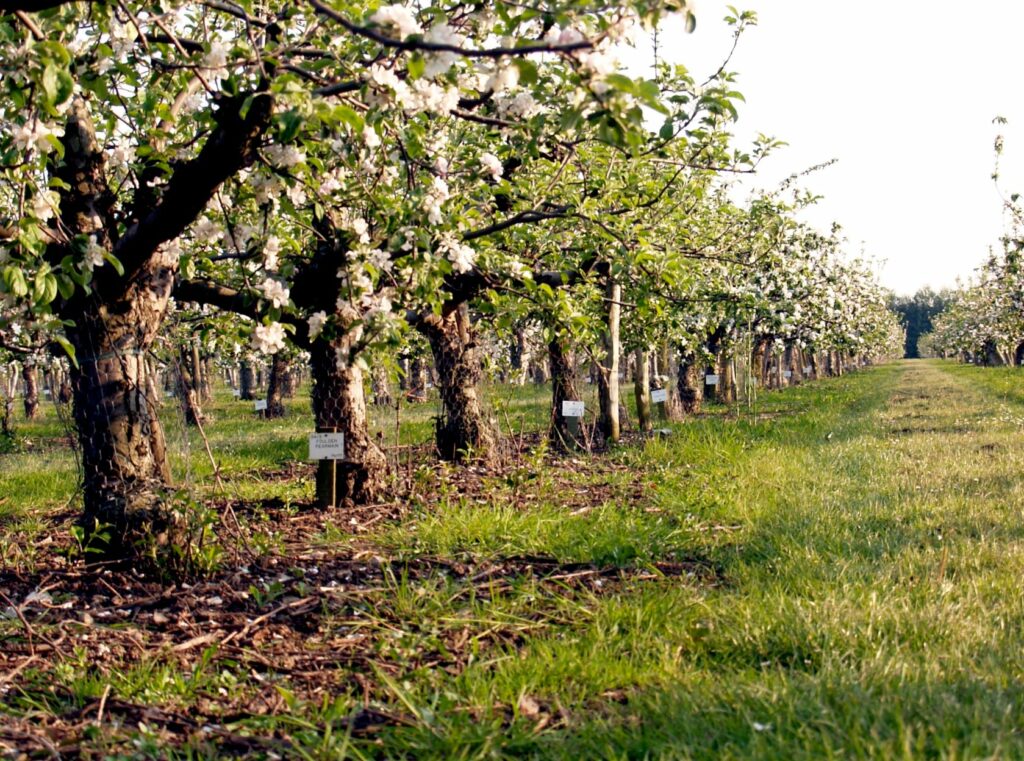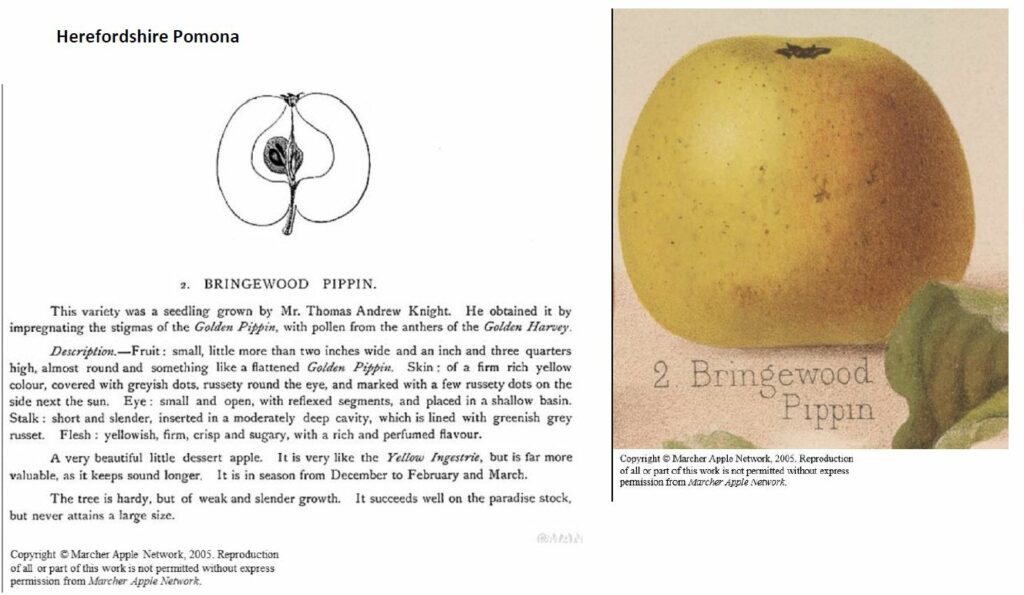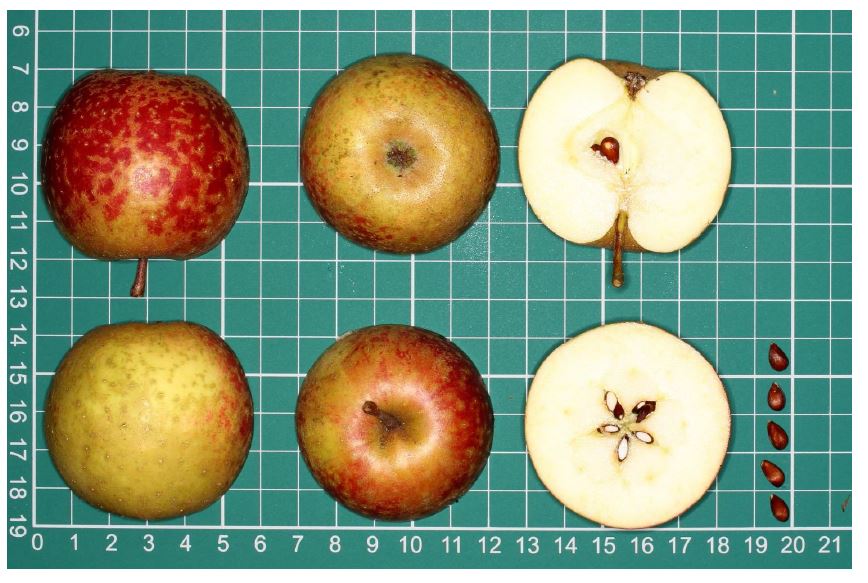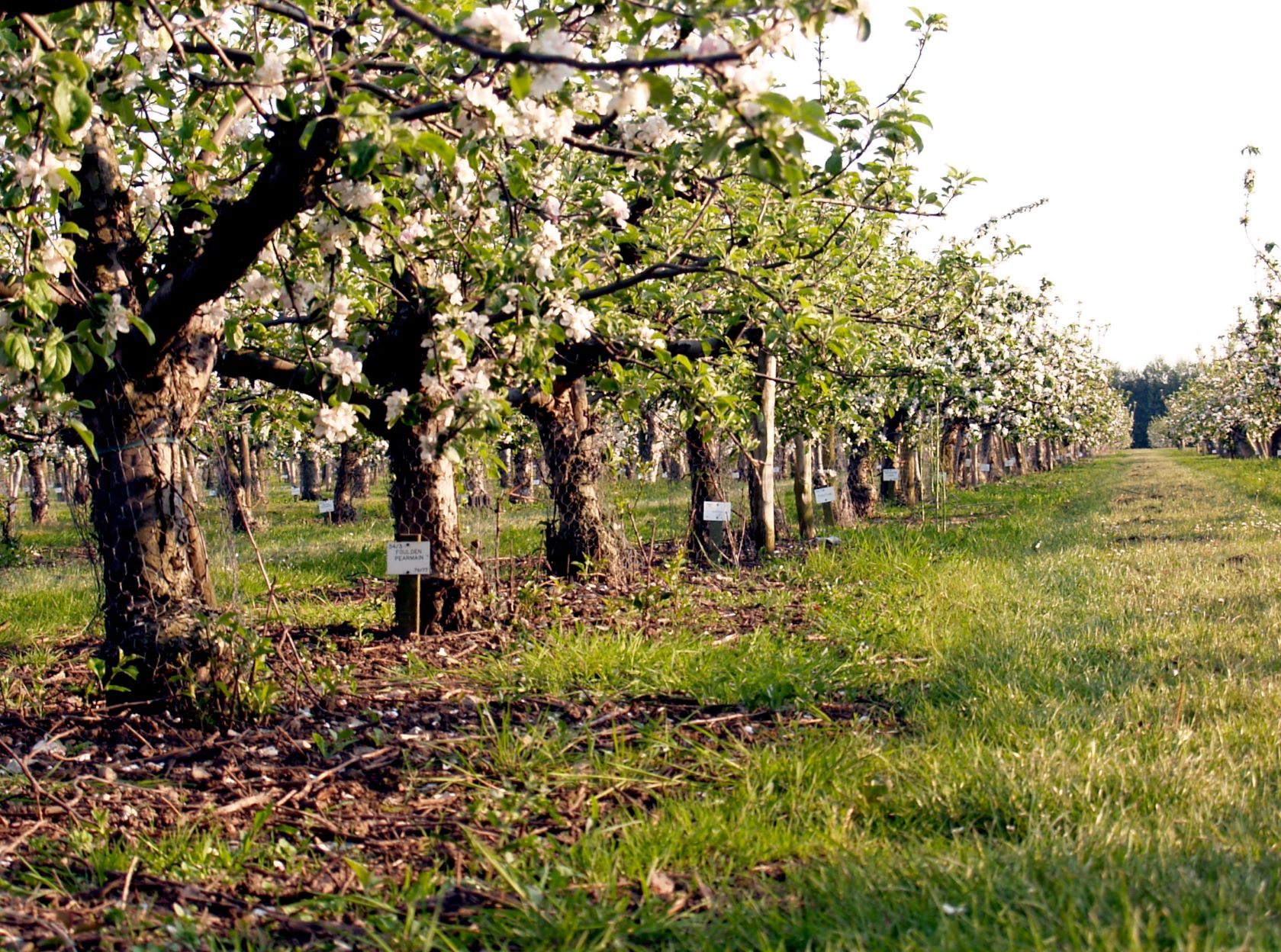This year, the National Fruit Collection celebrates its 100th anniversary and 70th year at Brogdale Farm in Kent. Here, the Scientific Curator Matt Ordidge reflects on how the purpose of the collection has changed over that time – from its original objective as a cultivar reference source to the main current objective as a genebank to protect the diversity in fruit crops for the future. He also highlights the importance of local collections and enthusiasts in supporting the identification of apples in local orchards to analyse and help maintain genetic diversity.

The National Fruit Collection was first established in 1922 as a collaboration between the Royal Horticultural Society and the Ministry of Agriculture and has been curated by the University of Reading (under contract to DEFRA) since 2008. The collection comprises approximately 3,500 cultivars of tree fruit, mostly of apple, pear, plum and cherry each maintained as a pair of trees.
In our most recent publication, the scientific team has drawn on aspects of the collection that span its hundred years of history. Local and heritage cultivars of fruit hold an important place in society. Through collaboration with a number of local orchard groups, and colleagues at the National Institute of Agricultural Botany at East Malling (NIAB-EMR), the team have supported the identification of apples in a range of local orchards and collections and begun the analysis of their genetic diversity in comparison to the holdings at Brogdale.
The scheme (coordinated on behalf of the local fruit groups by Peter Laws of FruitID.com) commissioned DNA fingerprinting of over 3,000 local holdings through a service provided by NIAB-EMR. All samples were compared against the Collection’s database. Until this analysis, the identification of local holdings had relied for many years on either naming (which was often confused through the use of local ‘synonyms’ as well as mis-identification) and/or by comparison of fruit characters (which is often complicated by the effects of local growing conditions and relies heavily on subjective assessment). The use of DNA fingerprinting allowed an objective assessment of many locally valued finds. Complementary analysis was carried out in parallel at the University as part of the curation of re-propagated trees in the collection itself.
The scheme was able to identify around 60% of the apples supplied by local collections, and these represented over 500 different cultivars that are held in the NFC apple collection. However, over 900 genetically unmatched samples were also found. Initial genetic analysis suggested that much of the diversity within these new finds was already covered within the collection holdings and, given that all apple seedlings are effectively unique, it will not be straightforward to bring all of these finds into the physical collection. But it was certainly surprising to realise that so many apples held and valued by the local groups were not represented at Brogdale.
As a result, a Register of Local Cultivars has been established. Again this has been coordinated on behalf of the local groups through FruitID with an inaugural meeting hosted at Reading. Highlights from the first phase of the Register include the findings of ‘Barcelona Pearmain’ and ‘Bringewood Pippin’ (dating to the 1800s and previously thought to be lost) that were both identified by the Marcher Apple Network in the Welsh Marches.

‘Barcelona Pearmain’ had been found during 2009 as a hundred-year-old tree on a farm near Tewkesbury and ‘Bringewood Pippin’ was found as another old tree in an orchard in Shropshire during 2004. Until now they had not been formally recognised by the National Fruit Collection.

Alongside the finding of these old cultivars, a number of known seedlings have been named including ‘Don’s Delight’ from Devon, ‘White Tie’ from Dorset and ‘Forty Winks’ from North London as well as a russeted form of the cultivar ‘Greensleeves’ identified in a commercial orchard in Norfolk (named ‘Blofield Russet’).
The findings will help to ‘bridge the gap’ between the local collections and the NFC and, as well as supporting the further maintenance of local collections will ultimately feed into accession policy for the National Collection. Newly registered cultivars will either be included in the online NFC database or accessed into the physical collection which will further improve the National fruit Collection as an archive of the nation’s fruit heritage, preserving the findings for future generations.
Matt Ordidge is Scientific Curator for the National Fruit Collection at Brogdale, which is maintained and curated by the University of Reading on behalf of the Department of Environment, Food and Rural Affairs. This year’s Blossom Tours at Brogdale begin on 1 April (weather permitting).

